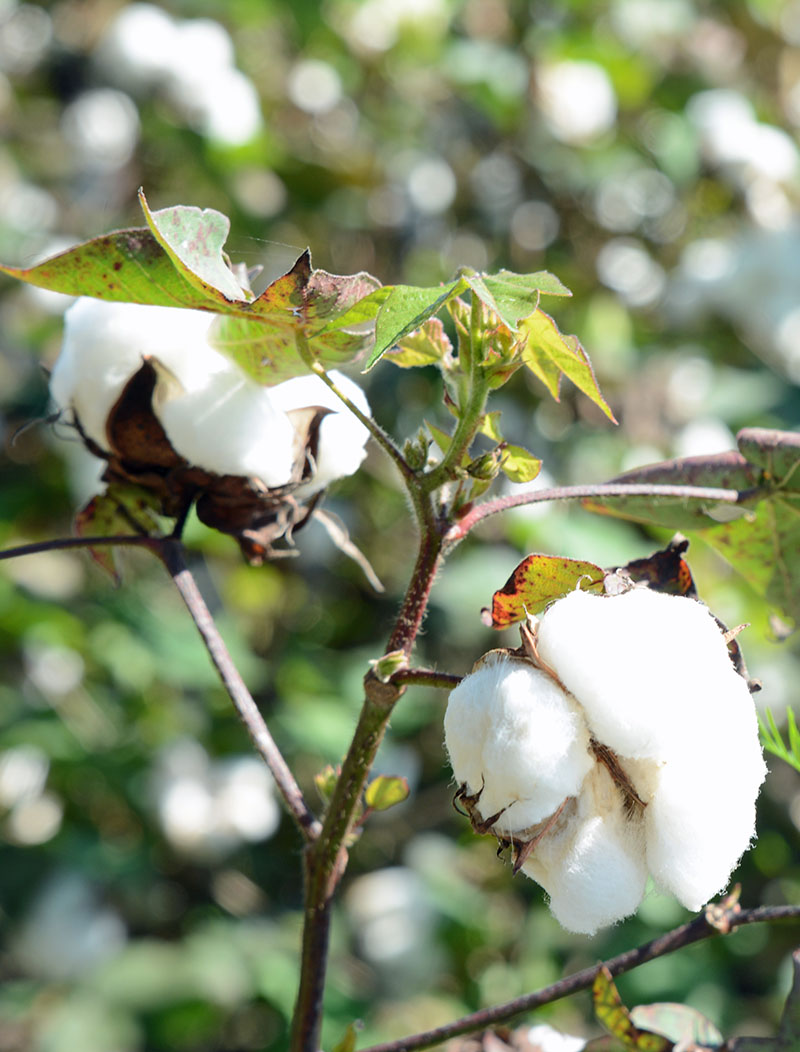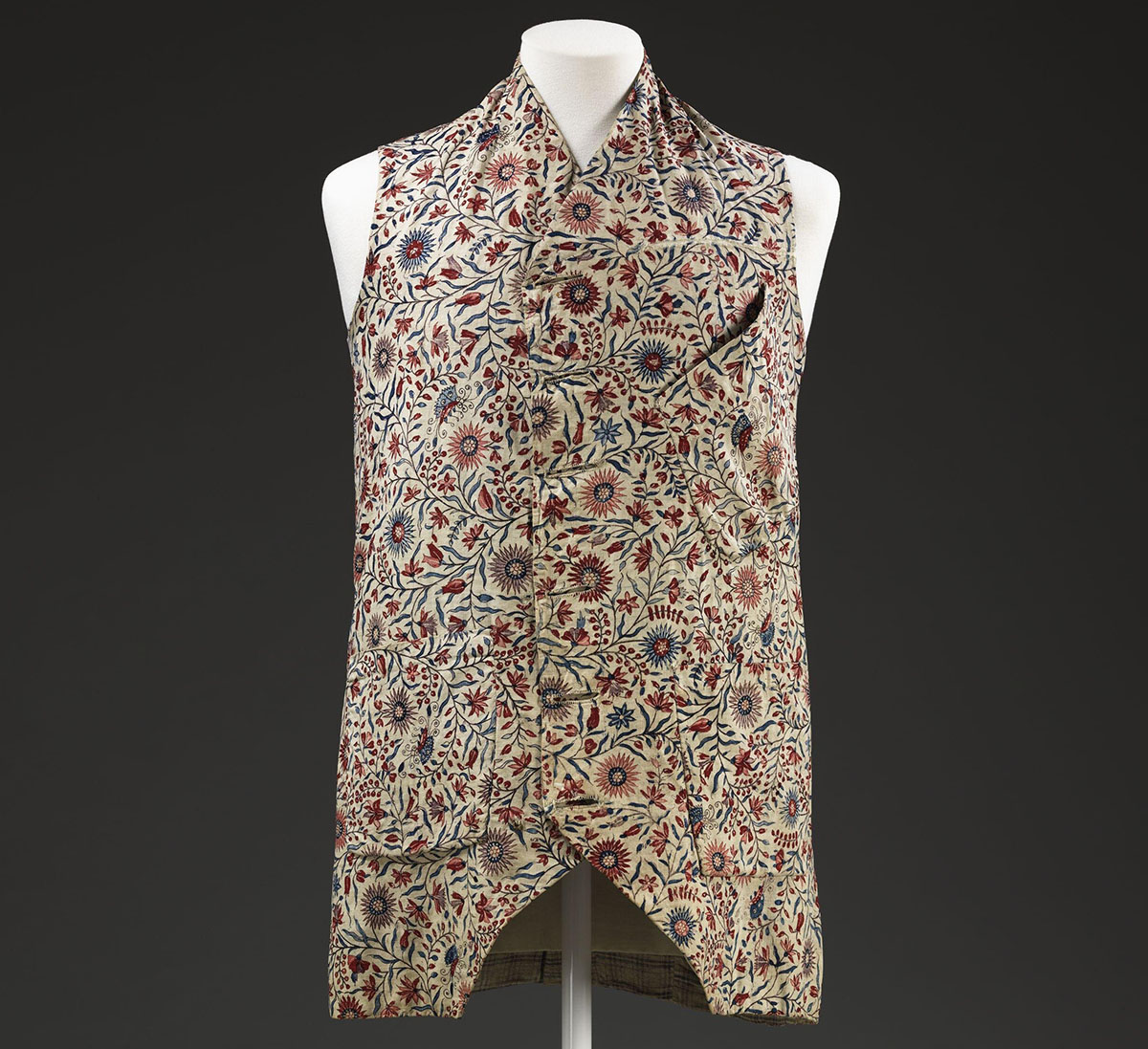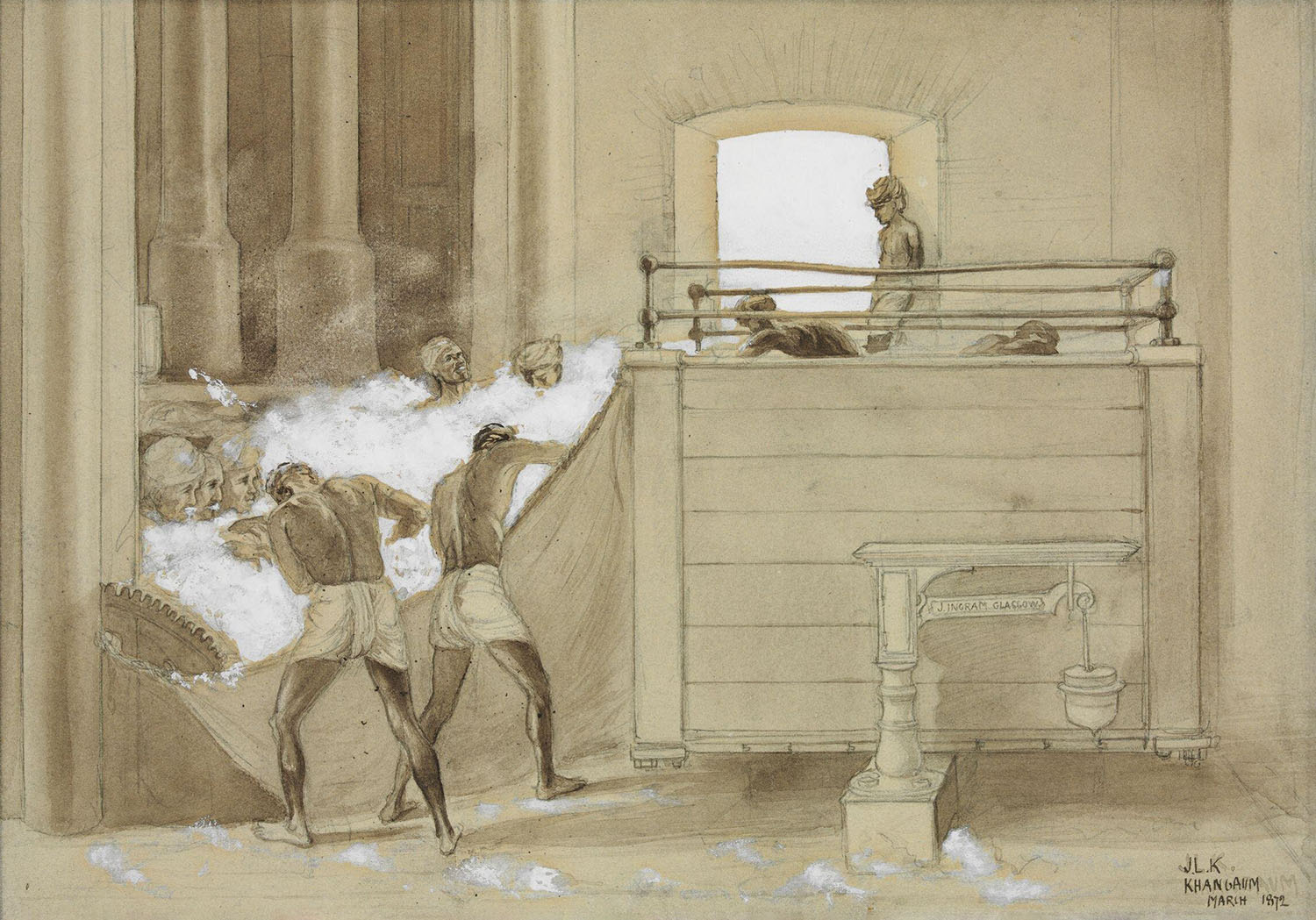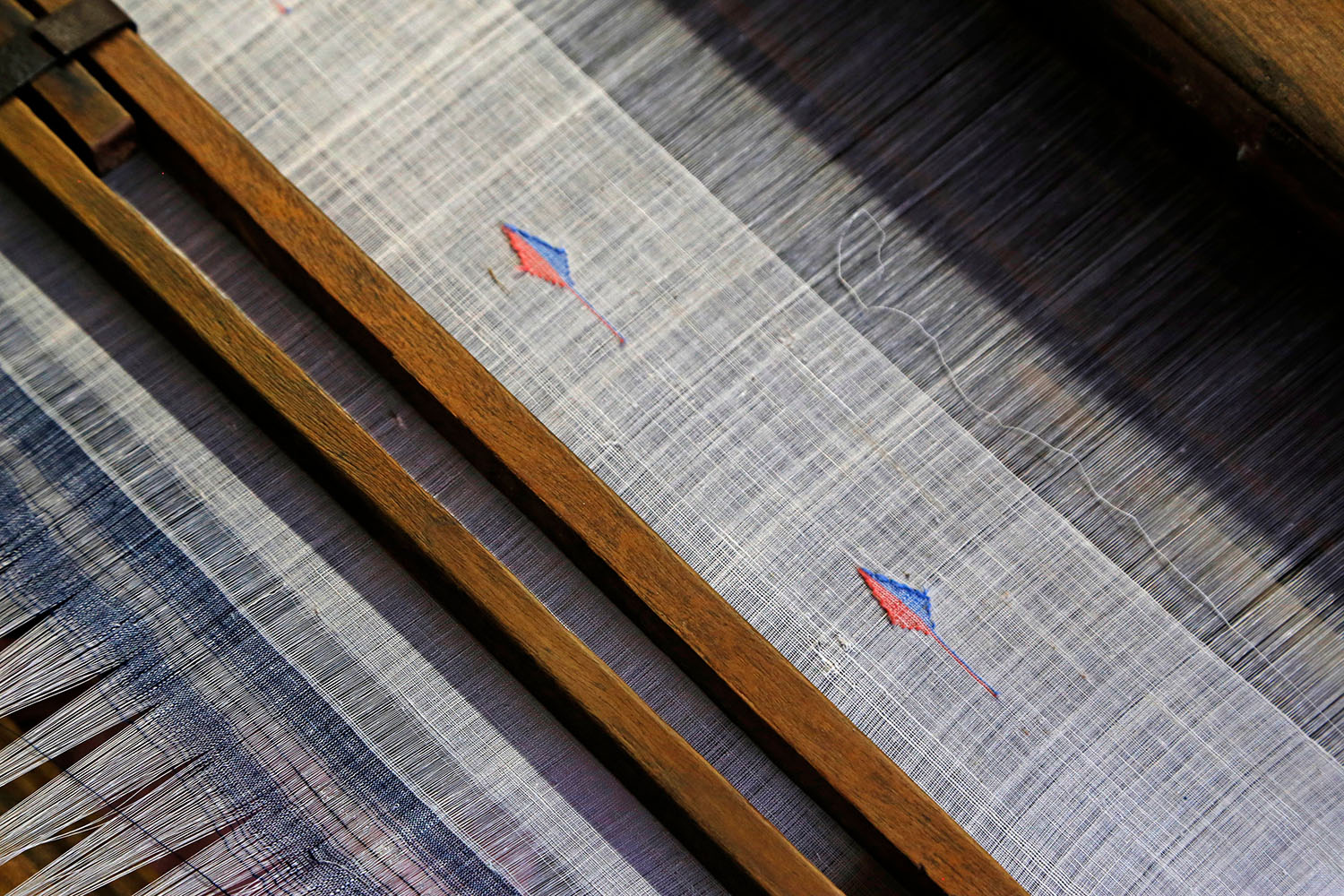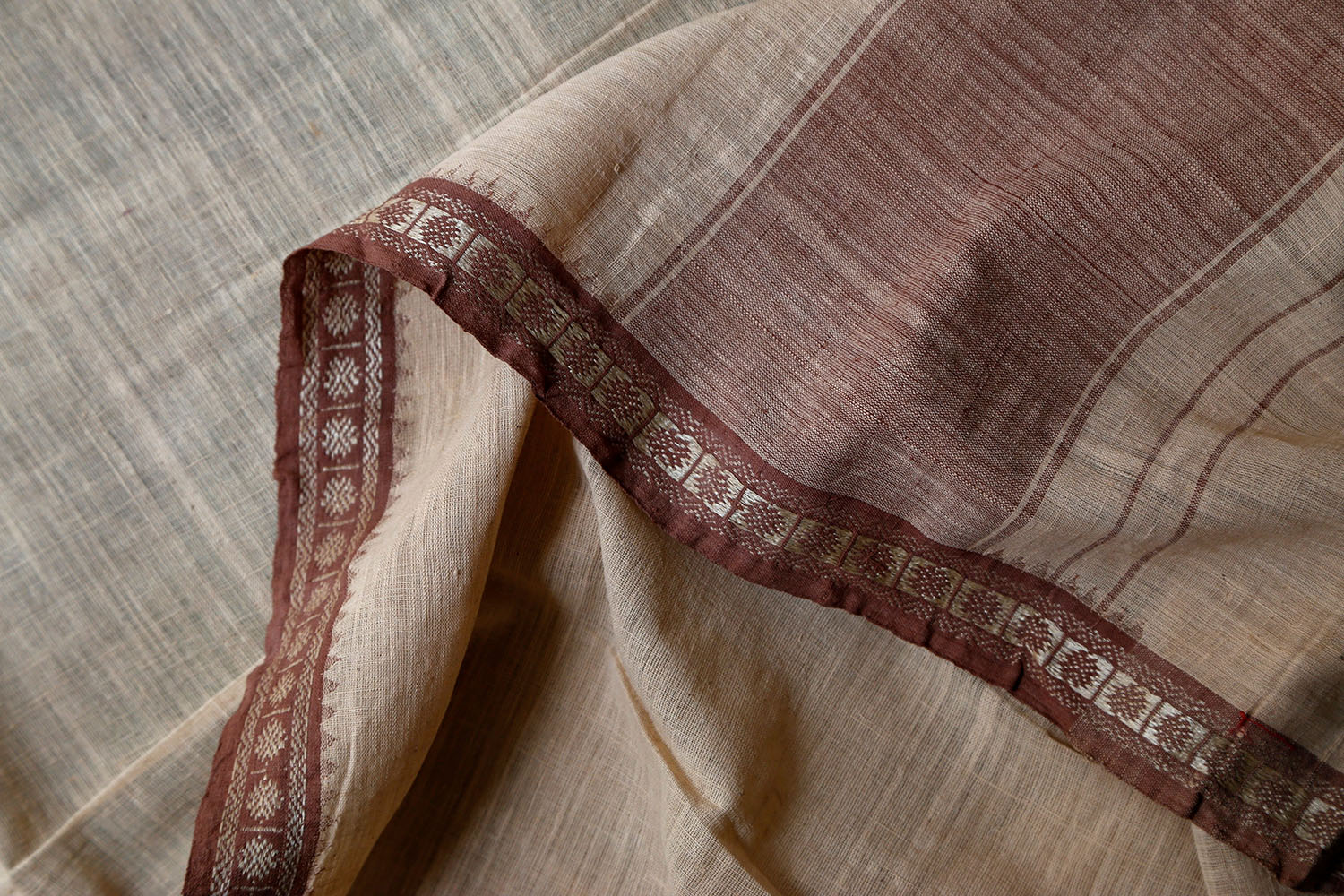ARTICLE
Cotton
Between the eleventh and nineteenth centuries, cloth from the Indian subcontinent occupied the largest share of the global cotton trade. Domestically, cotton was woven into a variety of garments specific to the subcontinent, such as sarees and dhotis. The appeal of Indian cotton was not only its softness and lightness, but also the variety of patterns and depth of colour. Kalamkari and chintz were dyed fabrics that became exceptionally popular across the world. Indian dyes such as madder and indigo were derived from plants native to the subcontinent and had a vibrancy that resulted from regionally specific and carefully guarded dyeing techniques. Most exports of cotton from India came from ports along the western and eastern coasts, as well as the larger hinterlands present-day Gujarat, Kerala, Odisha and Andhra Pradesh that these ports serviced. Indian merchants traded both finished and unprocessed (or calico) fabric in Eastern Africa, West Asia and Southeast Asia, with the earliest evidence being a fragment of patterned cloth from Gujarat that was found in Egypt and dated to the fourteenth century. There was also a considerable exchange of knowledge and a strong Indian influence on design in the native textile industries of these regions.
Between the sixteenth and eighteenth centuries, European powers — initially the Portuguese, then the Dutch East India Company — became a regular presence in the trade of Indian commodities, gaining shares due to demand flowing in from new colonies such as Mozambique, Java and Indonesia. By the eighteen century, however, the British East India Company came to control the actual production of cotton fabric in India. In that century and in part of the next, Indian chintz — which could be easily mass-produced — was tailored to European demand, and sold by the Company in Europe and the Americas. In Britain and France, during the early eighteenth century, a blanket ban was imposed on imported cotton to protect the native textile industry from the highly coveted and competitive Indian chintzes and muslins. While this ban did not prevent the British East India Company from selling Indian-made cotton goods elsewhere, it did grant European manufacturers time to devise ways of mechanising the production of cotton fabrics.
By the end of the eighteenth century, machine-made fabrics allowed these manufacturers to start producing large quantities of cotton textiles themselves. The cotton gin, invented in the USA, was used to separate cotton fibre from the seeds at great speed, allowing for an exponential rise in production of US-made cotton and therefore a corresponding reduction in the demand for raw Indian cotton, while the Jacquard loom, spinning mule and decades of careful study of Indian dyeing techniques entirely mechanised the weaving and finishing processes and shrunk the market for Indian chintz. By the mid nineteenth century, India supplied the world with a modest quantity of hand-painted kalamkari goods and raw cotton, while Indian consumers largely bought the relatively cheaper British-made chintz instead of native cotton textiles.
A cornerstone of the Indian independence movement was khadi, or handspun cotton yarn, which was seen as a pro-handicraft, nativist rebuttal to a market that was flooded with British cotton fabrics. In order to keep up with global demand, however, industrialisation was an essential component of cotton production in India for most of its independent history from the mid twentieth century onwards, although Indian-owned cotton mills have been active since the late nineteenth century. More recently, genetic modification has had a major impact on the nature of cotton farming in India. In 2002, Bt Cotton was introduced as a genetically-modified, pest-resistant variety that, due to transgenes from the bacteria Bacillus thuringiensis, is resistant to bollworm and boll weevils, typically the biggest threat to cotton plants. This has allowed India to take the lead in cotton production globally, though problems such as pest resistance to Bt Cotton, generational falls in seed quality, and patent-related hurdles to the creation of a native genetically-modified cotton continue to persist.
Bibliography
Our website is currently undergoing maintenance and re-design, due to which we have had to take down some of our bibliographies. While these will be re-published shortly, you can request references for specific articles by writing to hellomapacademy@map-india.org.




